 | ||
Patrick bergin fir bolg galway bay d ardaoin 9 30pm tg4
In medieval Irish myth, the Fir Bolg (also spelt Firbolg and Fir Bholg) are the fourth group of people to settle in Ireland. They are descended from the Muintir Nemid, an earlier group who abandoned Ireland and went to different parts of Europe. Those who went to Greece become the Fir Bolg and eventually return to the now-uninhabited Ireland. After ruling it for some time, they are overthrown by the invading Tuatha Dé Danann.
Contents
- Patrick bergin fir bolg galway bay d ardaoin 9 30pm tg4
- Celtic mythology fight with the fir bolg
- Myth
- Analysis
- References
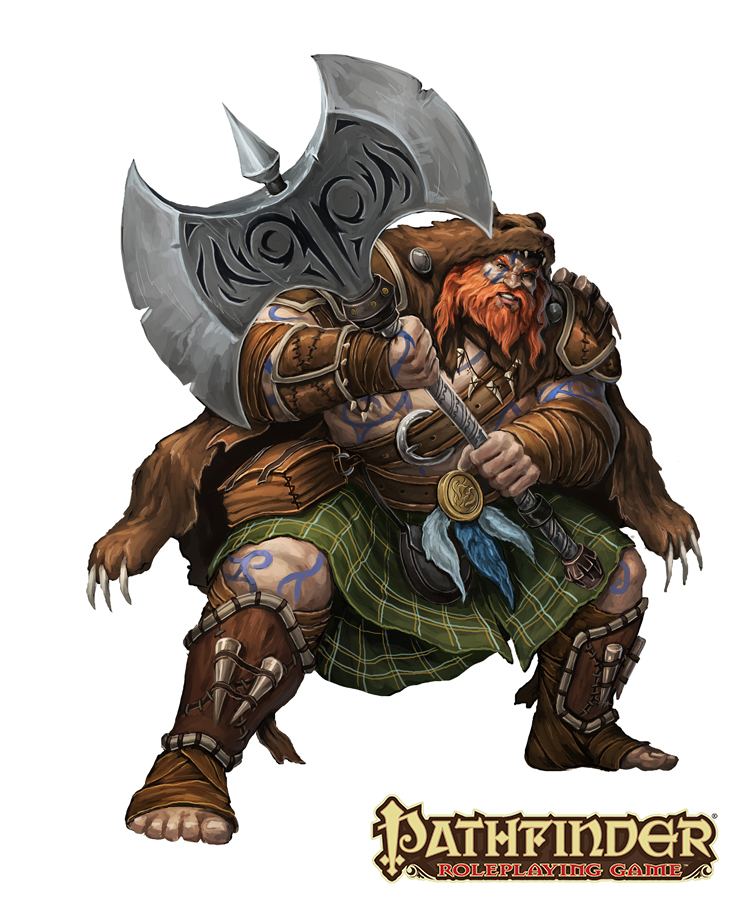
Celtic mythology fight with the fir bolg
Myth
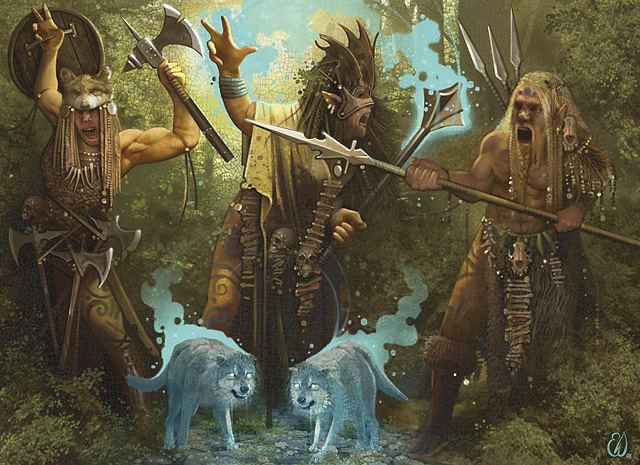
The Lebor Gabála Érenn (LGÉ) tells of Ireland being settled six times by six groups of people. The first three—the people of Cessair, the people of Partholón, and the people of Nemed—are wiped out or forced to abandon the island. It says that the Fir Bolg are descendants of the people of Nemed, who inhabited Ireland before them. All but thirty of Nemed's people were wiped out. Of this thirty, one group flees "into the north of the world", one group flees to Britain, and another group flees to Greece. Those who went into the north become the Tuatha Dé Danann (or Tuath Dé), the main pagan gods of Ireland. Those who went to Greece become the Fir Bolg. The LGÉ says that they were enslaved by the Greeks and made to carry bags of soil or clay, hence the name 'Fir Bolg' (men of bags). The Cét-chath Maige Tuired says that they were forced to settle on poor, rocky land but that they made it into fertile fields by dumping great amounts of soil on it. After 230 years of slavery (or oppression), they leave Greece at the same time as the Israelites leave Egypt. In a great fleet, the Fir Bolg sail to Iberia and then on to Ireland. Led by their five chieftains, they divide Ireland into five provinces: Gann takes North Munster, Sengann takes South Munster, Genann takes Connacht, Rudraige takes Ulster and Slánga takes Leinster. They establish the High Kingship and a succession of nine High Kings rule over Ireland for the next 37 years. The last High King, Eochaid mac Eirc, is the example of a perfect king. The Fir Bolg are also said to contain two sub-groups known as the Fir Domnann and Fir Gáilióin.

After 37 years, the Tuath Dé arrive in Ireland. Their king, Nuada, asks that they be given half the island, but the Fir Bolg king Eochaid refuses. The two groups meet at the Pass of Balgatan, and the ensuing battle—the First Battle of Mag Tuired—lasts for four days. During the battle, Sreng, the champion of the Fir Bolg, challenges Nuada to single combat. With one sweep of his sword, Sreng cuts off Nuada's right hand. However, the Fir Bolg are defeated and their king, Eochaid, is slain by The Morrígan, though Sreng saves them from total loss. According to some texts, the Fir Bolg flee Ireland. According to others, the Tuath Dé offer them one quarter of Ireland as their own, and they choose Connacht. They are mentioned very little after this in the myths.
Analysis
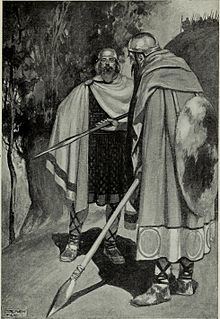
The name Fir Bolg is usually translated as "men of bags". The Irish word fir means "men" and the word bolg/bolc can mean a belly, bag, sack, bellows, and so forth. It has been suggested that it originally meant men who were 'bulging' or 'swollen' with battle fury.
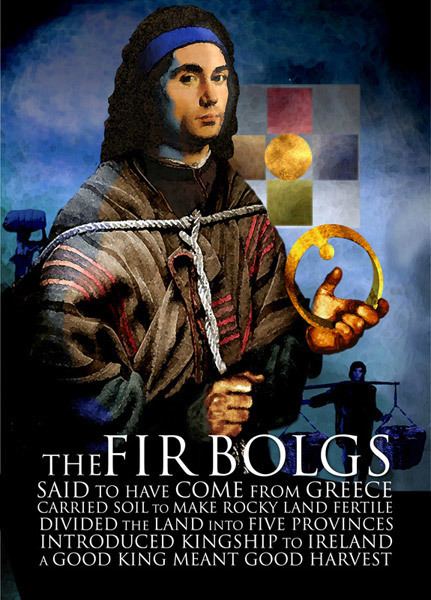
Today, most scholars regard the Lebor Gabála as myth rather than history. It is thought that its writers intended to provide an epic origin tale for Ireland that could compare to that of the Israelites, and which reconciled native myth with the Christian view of history. Ireland's inhabitants (in this case the Fir Bolg) are likened to the Israelites by fleeing slavery and making a great journey to a 'Promised Land'. The pagan gods (the Tuath Dé) are depicted as a group of people with powers of sorcery.
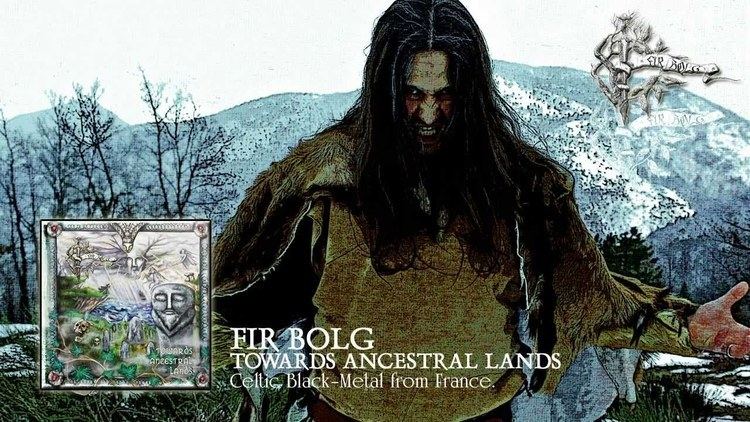
The Historia Brittonum—which is earlier than the Lebor Gabála—says there were only three settlings of Ireland: the people of Partholón, the people of Nemed, and the Gaels. However, it mentions that a leader called Builc or Builg and his followers had taken an island called Eubonia, believed to be the Isle of Man. The Lebor Gabála adds the Fir Bolg into the scheme and increases the number of settlings to six. It has been suggested that this number was chosen to match the "Six Ages of the World".

The name may be based on, and cognate with, Belgae. The Belgae were a group of tribes living in northern Gaul. Some have suggested that the writers merely named a fictional race, the Fir Bolg, after a real group, the Belgae. Others, such as T. F. O'Rahilly, suggest that the Fir Bolg, Fir Domnann and Fir Gáilióin were real peoples who arrived in Ireland in ancient times. He proposed that the Fir Bolg were linked to the historical Belgae, the Fir Domnann were the historical Dumnonii and the Fir Gáilióin were the Laigin.
It is suggested by John Rhys and R. A. Stewart Macalister that the Fir Bolg are the Fomorians (Fomoire) under another guise. The Fomorians seem to have represented the harmful or destructive powers of nature, while the Tuath Dé represented the gods of growth and civilization. The Tuath Dé fight two similar battles at Mag Tuired, one against the supernatural Fomorians and one against the human Fir Bolg. In the myths, the Fir Bolg are the only group of settlers who do not encounter the Fomorians and the two groups never appear together.
